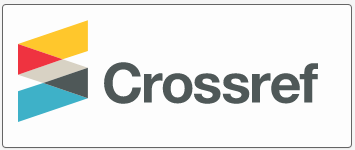Study of Some Physiological and Genetic Changes Using the Soybean (Glicine max (L) MEER) Test System
DOI:
https://doi.org/10.52340/idw.2021.498Keywords:
Pesticides, Insecticides, Soybean, Test system, Genotoxic xenobiotics, Mutation, Recombinogenic activityAbstract
Anthropogenic pressure on the biosphere has become a common process of the 21st century. Among substances synthesized by humans, genotoxic agents which include pesticides are considered to be particularly dangerous. The number of pesticides used in agriculture is gradually increasing, accumulating and circulating in the biosphere. The use of pesticides is accompanied by their involvement in food chains and accumulation in individuals. They are characterized by a fairly high stress index and cause genetic changes in living organisms. Various test methods have been developed to study these issues. B. Wig and Al. Podok suggested a genetic line for soybean containing a mutation of the chlorophyll-synthesizing gene. The genetic line is characterized by a phenotypic effect. Indicator, genetic line owner soybean, diploid, heterozygous, give three phenotypically different sprouts: green (genotype Y11 Y11), lettuce-color (genotype Y11 y11) and yellow (genotype y11 y11). 1: 2: 1 ratio is observed between the sprouts. This type of ratio is typical for incomplete dominance. Through the spots detected on the leaves it is possible to study the recombinogenic and mutagenic activity in soybean induced by chemical and physical factors and to record the induced changes in somatic cell. Using these systems, we first studied the effects of pesticides karate and Bordeaux on plant growth and sprouting processes and the genetic changes induced by their influence. Both pesticides had an inhibitory effect on physiological processes, also, the frequency of direct mutations was determined by the "dose-effect" phenomenon.
Downloads
References
გორდეზიანი მ. , კვესიტაძე გ. ეკოლოგიის ქიმიური საფუძვლები 2000.
შათირიშვილი ა. ჭუჭულაშვილი ი. სამედიცინო ბიოლოგია თბ. 2002.
Дубинин Н.П. Мутагены среды и наследственность человека. Труди избр. Науч. Ислед. Т.2Ю. 2000
Дурмишидзе С.В. Биохимия растении и охрана окружающей среды. В сб. Биотрансформация ксенобиотиков в растениях Тб. Мецниереба 1988 4-7
Busten S., Beudot F., Mclnnes B, Pesticide and noxious weed newsletter, Erop insights; Asian soybean rust; fungicides. 2005, v15, 2, 37-42.
Charles J. M., Cifone M. A., Lawlor T.,Mrli H.,Young R., Leeming N.M., Evaluation of the in vitro genetic toxicity of 4 ( 2,4-ichlorophenoxy) butyric acid. Mutat. Res., 2003. 12, 472(1-2), 75-83.
Chitanava Zh., Bazatashvili N., Shatirishvili A., On GenetikChanges in Somatic cells of. Soybean ( Glycine max (L) Merr). Ynducend by the Fungicides Kurozit and Mykal. Ball. Georg. Acad. Sci., 2003, 168, 3, S36-538.







